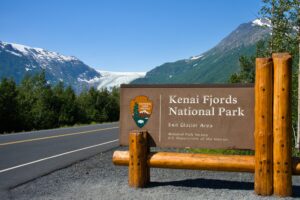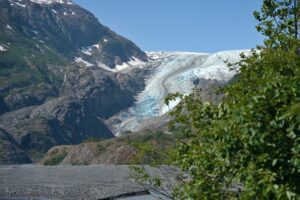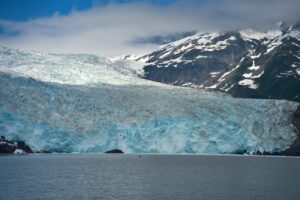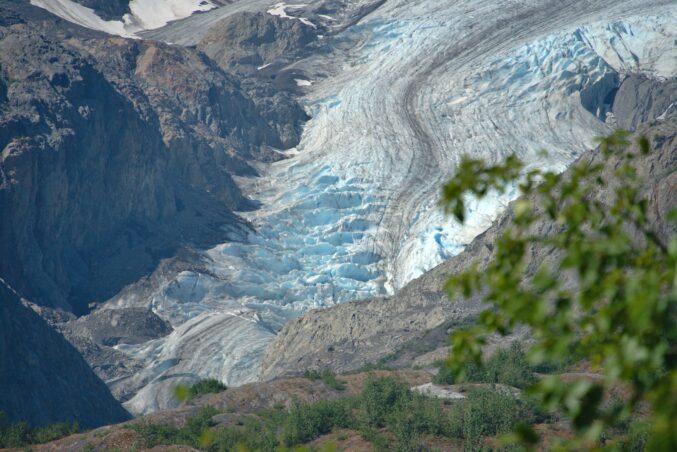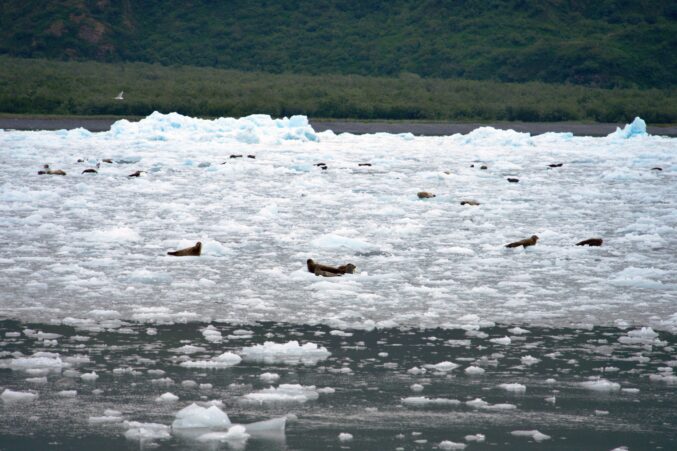
What a view!
Glaciers are something you have to see to believe. I live in western New York, an area formed thousands of years ago by glaciers. They gave us hilly landscapes and the gorgeous Finger Lakes. However, until I saw the glaciers in Alaska, I didn’t truly understand their size and power.
- Kenai Fjords entrance with Exit Glacier in the background.
- The view of Exit Glacier from our hike.
- Glacier Wonders!
On our visit to Kenai Fjords National Park, we did some land exploration of Exit Glacier. Then we took a boat tour out through Resurrection Bay to see glaciers from the water. The temperature dipped the closer we came to the glacier, and its height was astounding. We were about a half-mile away and could see kayakers, tiny miniature boats in front of the wall of blue ice. Harbor seals stretched out endlessly on the floating icebergs.
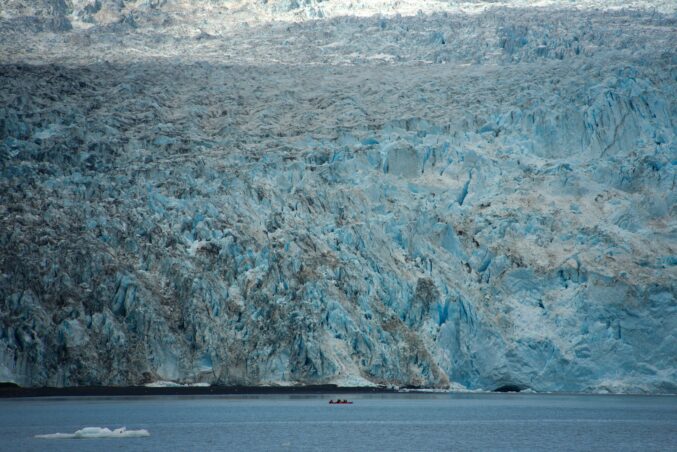
Big glacier, tiny kayak.
There are many ways to use glaciers in the classroom, especially in science class! Making “mini-glacier” ice-cubes and running them over different materials (sand, beads, gravel, etc.) to see what they can pick-up and move is an easy, hands-on way for young learners to grasp the concept of how ice shapes the landscape. Environmental factors including the rapid rate of melting, loss of habitat for polar animals, and the impact this influx of melted ice has on the seas are great lessons to engage older students in climate change and scientific research.
- Why is it blue? Science to solve with your students.
- Harbor seals make their home on glacier icebergs.
Library Learnings: Glaciers are a unique and important part of our Earth, just like each and every student! Share the whimsical picture book Cecil the Pet Glacier by Matthea Harvey to reinforce the social-emotional skills of acceptance, appreciating differences, and valuing special skills. It has a little glacier science, too!



